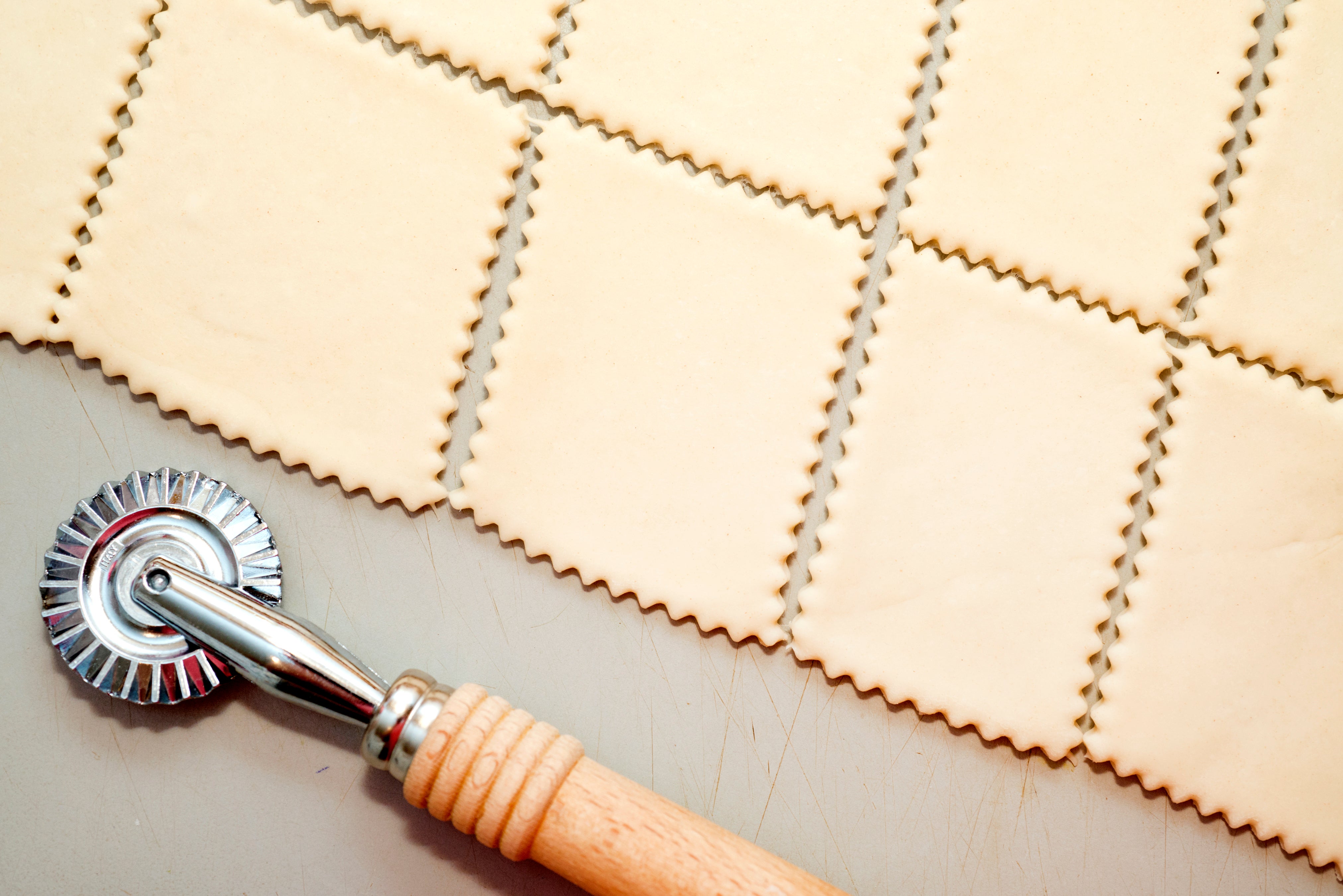I miss gnocco fritto like an old friend. When we get together, the conversation comes so easy.
We first met in Modena some years ago. In the neighboring town of Parma, gnocco fritto also goes by the alias torta fritta, and in Emilia-Romagna’s capital city of Bologna, it’s called crescentina. But gnocco fritto is not to be confused with the griddled crescentina Modenese, which is a synonym for tigelle, the round bread from Modena that resembles flatter English muffins. And while we’re on the topic of semantics, gnocco fritto isn’t your conventional potato-dumpling version of gnocchi, either. And it’s a savory item—never showered with powdered sugar like a zeppole (which is far more of a fritter, if a not doughnut, anyways).
The most straightforward definition of gnocco fritto is that it’s a mixture of 00 flour (the iconic Doppio Zero, a finely ground flour milled for pasta making), water and/or milk for hydration, some sort of fat (olive oil, lard), a leavening agent, and salt. These ingredients are well kneaded into a pasta-like dough that’s rolled out to a thin sheet, folded over, cut into rectangles, and serendipitously fried to a sparkling sandy brown.
The toothsome consistency comes by way of envelope folds; the dough is laminated like a croissant, yielding an unmistakable chew amid the flaky layers. Gnocco fritto is meant to be eaten with an assortment of salumi (in Modena and Reggio Emilia it’s prosciutto, mortadella, capocollo), or soft, spreadable cheese, like squacquerone. Basically, gnocco fritto is a vehicle for delivering antipasti from plate to mouth; everyone has their own method, be it topping the fried puff open-faced, folding one in half or even making a sandwich, using two gnocchi fritti as bookends.
Even though I’ve only been to Emilia-Romagna a few times, I can’t tell you where I first encountered the warm breath of biting into gnocco fritto. Whereas its ubiquity may be its defining characteristic, gnocco fritto is a fixture at the table throughout the meal. They’re casually on the menu at Caffè Del Collegio near Modena’s Duomo, for aperitivo hour, on the lunch menu (only) of white tablecloth Ristorante Antica Moka in the outskirts of the city, and a composed dish near Piazza Roma, at Hosteria Giusti, during dinner. The best I had was at Andrea Bezzecchi’s Acetaia San Giacomo in Novellara in Reggio Emilia during a balsamico tasting: warm pockets, large enough to fit into the palm of your hand, enveloping the endless spread of salumi e formaggi.
Gnocco fritto is best fresh and hot from the fryer, where it puffs up like down pillows, fluffed for bedtime. Its exterior crispness rivals the satisfaction you get from cracking into the quintessentially blistered skin of porchetta, yet somehow, in contrast, everything stay al dente in the middle like expertly cooked pasta.
Entire books have been written on beloved snack. In his Confraternita del Gnocco D’oro (“brotherhood of the golden dumpling”), Luca Bonacini leads readers through the streets of Emilia-Romagna in search of the best gnocco fritto, with accompanying cappuccinos and glasses of Lambrusco, depending on the time of day.
Even without a literary guide, I found myself in Guastalla’s central piazza last fall, on the fourth weekend of September, wandering around the town’s “Lost Plants and Animals” festival (the plants and animals weren’t lost, per se, but rather, displayed as a reminder of what existed there before, in hopes of their return). Traditional fruits, flowers, vegetables, and rural animals were around every corner, but my full attention was on a series of street vendors serving bite-sized gnocco fritto in brown paper cones. I ate them straight out of the fryer, glowing with a gossamer of oil, while walking around the ancient city thinking, What if I never have gnocco fritto again?
Late this September, gnocco fritto came back into my life. While in Denver, I met up with my friend Brad Daniels, a chef who spent years in Philly working with Marc Vetri, the godfather of traditional Italian cuisine in the States.
Daniels walked me through the steps of gnocco fritto. I watched as he tossed all of the ingredients into a mixer with a dough hook. He added red wine vinegar to break down the gluten so the dough was a bit more supple, and nearly equal parts milk to water for a creamier texture. He mixed this until it was fully emulsified and then kneaded the dough for a few minutes by hand, just until it started to stick to his work surface. He wrapped it in plastic and let it rest.
Daniels told me that he’d learned how to make gnocco fritto from Jeff Michaud, another Vetri restaruant alum, while they worked together at Osteria. But when I talked with Michaud, his recipe was quite different. Michaud lived in Italy over a decade ago and worked at the revered Frosio restaurant in Bergamo, just northwest of Milan. It was there that he met his wife, Claudia. It’s also where he met sgabei, a fried dough so similar to gnocco fritto that it might as well go by the same name. His mother-in-law taught him to mix flour, water, yeast, olive oil, and salt; to cut the dough into narrow strips, rather than squares; and to serve it with salume, lardo, culatello, and crescenza cheese.
Upon returning to the States, Michaud attempted to make a version of gnocco fritto at Osteria, but consistency proved to be problematic. He subbed baking powder for yeast in hopes of controlling the rise, so the dough wouldn’t overproof at night. Gnocco fritto replaced ciabatta and focaccia on the table; lighter and airier, it pairs well with most any appetizer of meats and cheeses, no matter how filling and fatty. Michaud even served it with beef tartare made with capers, parsley, and lemon zest, topped with a generous grate of 24-month Parmigiano, an ode to his time as a butcher in Italy.
I’ve followed both Daniels’s and Michaud’s recipe at home a few times now, trying to get the folds and the crispness and the delicacy just right, angling for what I found walking the cobblestone streets of Modena. There’s an expression in Italy that means “where we are”: dove siamo. I’m happy to be there as long as there’s gnocco fritto.


